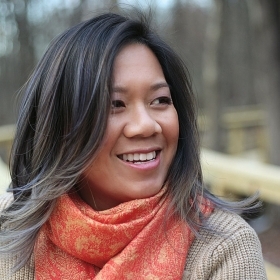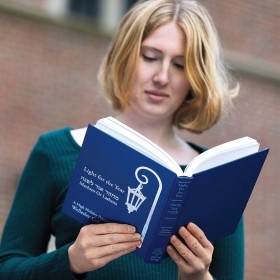The People’s Painter, a picture book for young readers by Cynthia Yenkin Levinson ’67, tells the story of artist Ben Shahn and how he grew into his purpose of depicting injustice and activism.

Cynthia Levinson ’67
The People’s Painter: How Ben Shahn Fought for Justice
with Art
Abrams Books for Young Readers
48 pages, $18.99
Cynthia Yenkin Levinson ’67, author of children’s books about civics and young people’s activism, won the American Library Association’s prestigious Robert F. Sibert Informational Book Medal for her latest work, The People’s Painter, a picture book for young readers. Her immersive biography of artist Ben Shahn explores how Shahn grew into his purpose of depicting injustice and activism.
Tell me a bit about your writing process for this book.
As with all my books, the research was exhilarating, and the writing was exasperating. I love doing research, particularly site visits. I went to many places where there are Shahn installations. I talked with his son; I saw his studio. I love the research so much that I have trouble winnowing the information down. I knew the main through line would deal with social justice. I wanted to bring in his storytelling and his enjoyment of lithography and lettering. Figuring out how to meld sub-themes with the major theme of social justice was the most challenging part.
How do you approach writing about heavy subjects for children?
I remind myself that children themselves live through events adults are sometimes reluctant, possibly overly reluctant, to let them know about. Almost any event can be conveyed to a child, no matter how scary, if it’s done in an age-appropriate way. Being able to rely on a really fine artist, Evan Turk, helped me. There are hard topics in here. Referring, for instance, to “young cotton-pickers in Arkansas.” A child might not know what that means but can get the ideas behind the illustrations.
Your books encompass a variety of topics. How do you decide what to write about next?
It depends on the book. I have three under contract, two directly related to social justice. One focuses on the Highlander Folk School and the beginnings of the Civil Rights Movement. It’s there that peaceful protest began to take form. While working on my first book, someone I interviewed mentioned having spent time at an integrated summer camp at Highlander. It took several years to settle into learning about it, but that book came about as a direct result of research for another book.
Do you see a connection between your work and Ben Shahn’s work of painting people in the margins?
Shahn is not well known; I’m glad to be able to bring awareness of him to a wider audience. He was Jewish, as am I. I don’t think of Jews as marginalized, but we are certainly discriminated against. In this book, I could convey what I see as the concerns he had—Jewish values.
Funderburg works in publishing in New York City.


